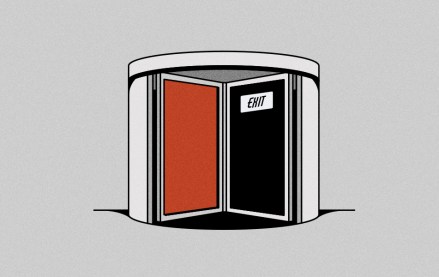
It took a while but Snap is finally jumping on the AI-powered ad bandwagon — following in the footsteps of Google, Facebook and the rest, which have been launching such tools since 2021.
The move is all about strengthening its appeal to the smaller advertisers it has spent years pursuing. As Snap’s CEO Evan Spiegel highlighted on the platform’s latest earnings call (Feb. 4), small to medium-sized businesses (SMBs) were the “largest contributor to ad revenue growth in 2024,” having been a big focus area for the team over the past 12 months. He stated that the company had achieved $1.56 billion during the fourth quarter of 2024, and a total of $5.36 billion for the full year, though he didn’t share specific breakdowns on how much of those numbers were thanks to their SMB advertisers.
Still, speaking to analysts, Snap CFO Derek Andersen said the team has a “pretty robust roadmap and enhancements on the way for SMB clients” this year, while teasing that during this first quarter of 2025, they’ll be testing one key product: a new smart budget optimization feature.
The product, as Andersen explained, automatically adjusts campaign budgets across all assets to deliver the best results for the advertiser — standard fare in AI-driven advertising. Snap’s version, though, isn’t nearly as powerful as what its rivals already offer.
Typically, the likes of Google’s Performance Max and Meta’s Advantage+, for example, hand the platforms major levels of control over campaigns. It’s the ultimate “set-it-and-forget-it” strategy —advertisers input their assets, and the tool decides what to do with it all. But given how new Snap’s smart budget optimization feature is, very little is known about the product’s nuances. A Snap spokesperson did suggest that while it’s not an equivalent of those other products on the market, the feature is “comparable” to them.
“They’ve [Snap has] made some new hires in leadership who are close to the product team that have acknowledged they are behind their counterparts as it comes to AI-based campaigns,” said Shamsul Chowdhury, evp paid social at Jellyfish. “We don’t have any SMB clients, but will be keen to try this out on our clients when the opportunity arises.”
The feature is part of a broader move by Snap to make its ad business more accessible to smaller businesses that might not otherwise have the resources to do so. Andersen continued on the earnings call: “… some of our investments that we’re looking at in the year ahead, not just the investments in product and to deliver the advertising roadmap, but also more resources specifically to help scale the SMB segment,” he said.
And one of those releases, which was launched in late 2024 is: personalized templates, an automatic campaign setup tool that streamlines ad creation, as a way to simplify onboarding for SMBs.
Platforms have been chasing smaller advertiser dollars for years. Meta and Google can contribute much of their own success to the category, said Sonata Insights founder and chief analyst Debra Aho Williamson.
“Anything Snap can do to make it easier for these businesses to buy advertising on the platform will go a long way toward helping to increase its revenue,” she said.
After this story was published, a Snap spokesperson shared that “We’re encouraged by the strong momentum with our improved ad platform – driven by 14% year-over-year growth in our Direct Response business – and helping our partners drive meaningful business outcomes. Our focus continues to be on accelerating and diversifying our revenue growth, and we continue to build on our investments to expand our AI-powered ad automation suite. Beta testing for Smart Budget Optimization will begin in late Q1.”
More in Marketing

Pitch deck: How Amazon is recasting Twitch as a core part of its CTV pitch
Amazon is positioning Twitch as a defining asset in its CTV ambitions.

Netflix transforms former mall department stores into experiential venues
The location in Dallas opens this week, and one at the King of Prussia mall near Philadelphia opened last month.

Future of Marketing Briefing: AI has created a new talent paradox in programmatic agencies
The job isn’t execution anymore. AI handles that. The job is judgement.







